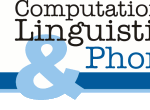Computational Linguistics Colloquium
25 February 2016, 16:15
Conference Room, Building C7.4
Mutual intelligibility between closely related languages in Europe
Charlotte GooskensIn Europe a large number of languages are spoken. Respect for linguistic diversity is a core EU value but the linguistic diversity can lead to communication problems that might only be reconciled with sufficient knowledge about the language situation at hand. However, the knowledge about the degree of mutual intelligibility and its linguistic and non-linguistic bases is rather limited. In my talk I will present the results of a large-scale web-based investigation of the mutual intelligibility of closely related languages within the Germanic, Slavic and Romance language families.
An overview will be given of the intelligibility structure of a large number of languages established by means of language tests that make it possible to compare intelligibility of various language pairs in their written and spoken form. To be able to explain the intelligibility results, we collected information about extra-linguistic factors such as language attitudes and language exposure by means of online questionnaires. Also, we measured distances at different linguistic levels between the included languages. The intelligibility results were correlated with the linguistic distances and extra-linguistic factors.
The results of the experiments indicate that intelligibility of spoken language as well as comprehension of written text in a related language is largely determined by the extent of the respondent's past experience with the target language: more exposure to the target language yield better intelligibility. However, even if we trim the data such that all remaining respondents have roughly the same amount of earlier exposure to the target language, intelligibility can be predicted with great accuracy from linguistic predictors (using multiple regressions models).
The results will help us to determine under what conditions receptive multilingualism works and what its preconditions and its limits are. In a more general sense the results will provide a greater understanding of the robustness of the human language processing system. How deviant can a language be before it is no longer intelligible to the listener?
If you would like to meet with the speaker, please contact
Irina Stenger.

